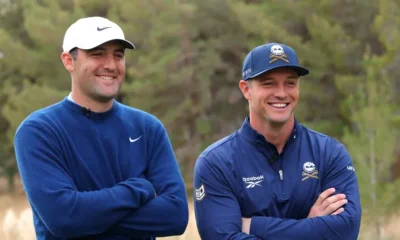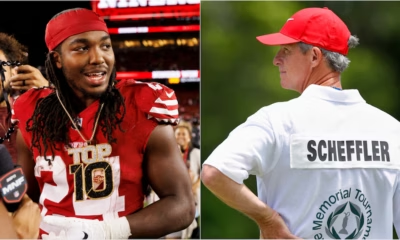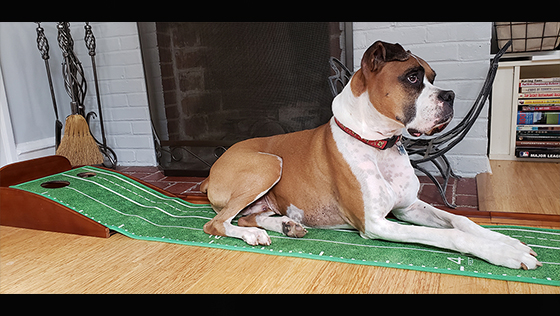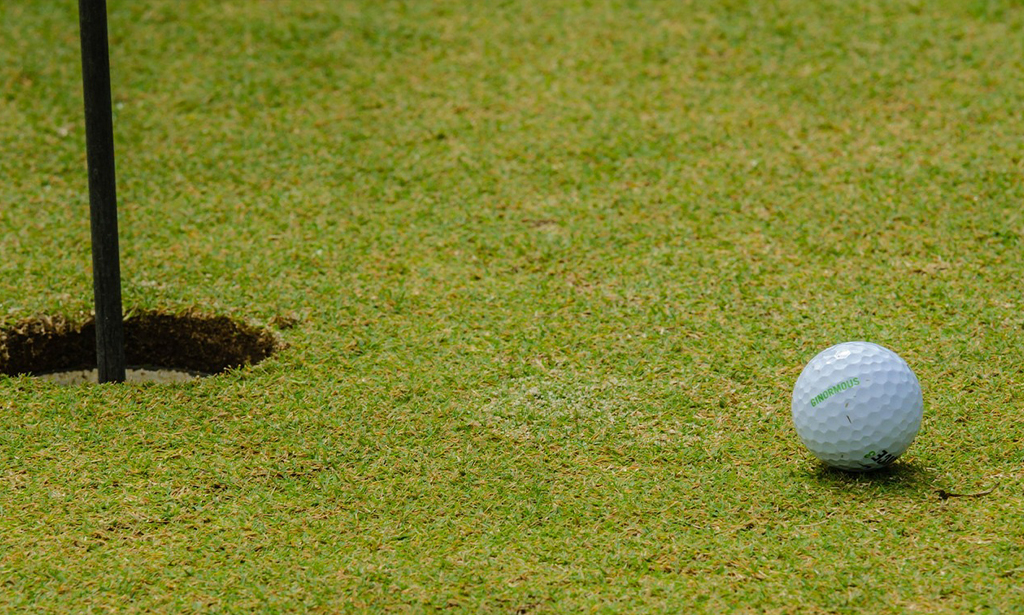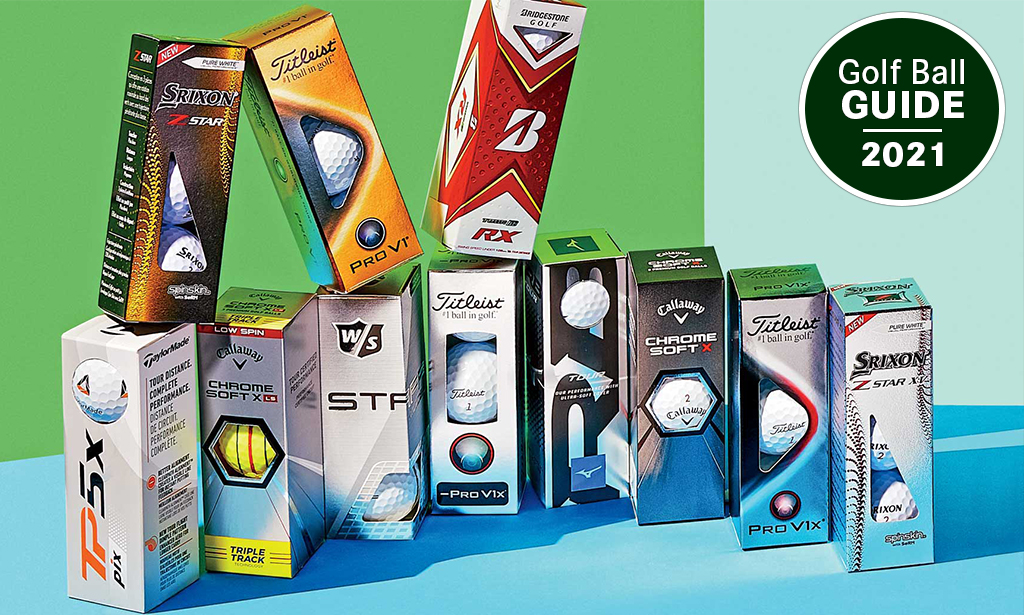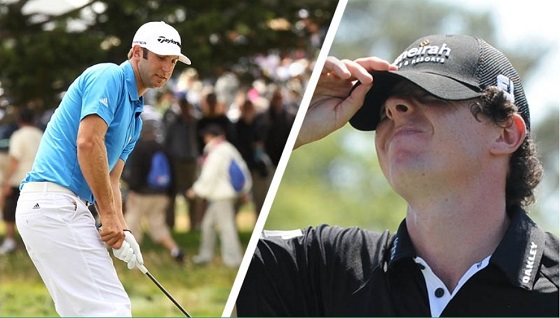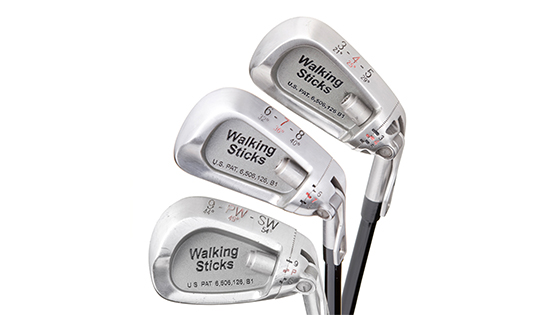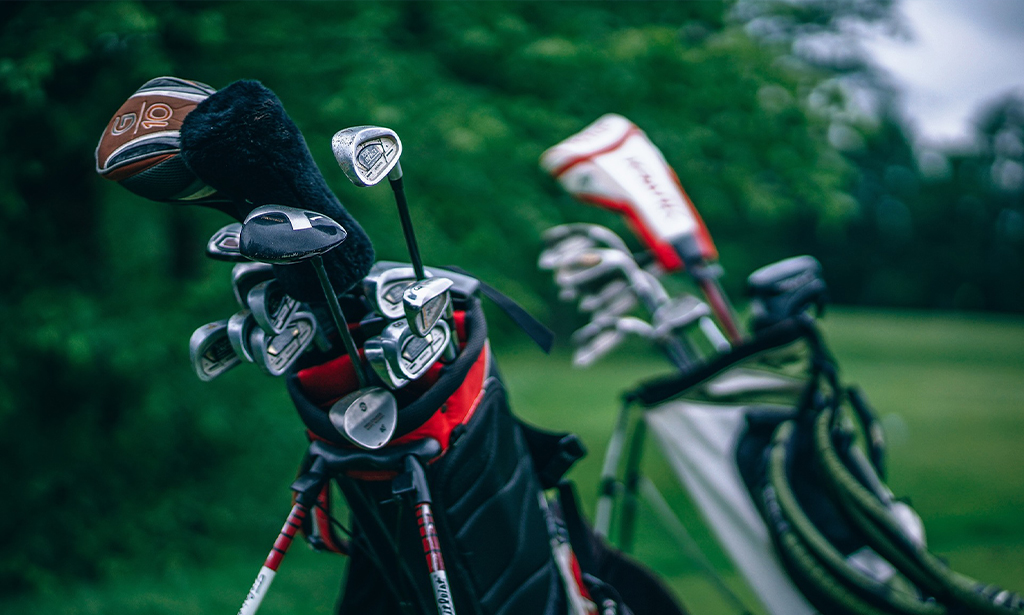Blog
Tiger Breaks His Silence Regarding his Return to Golf
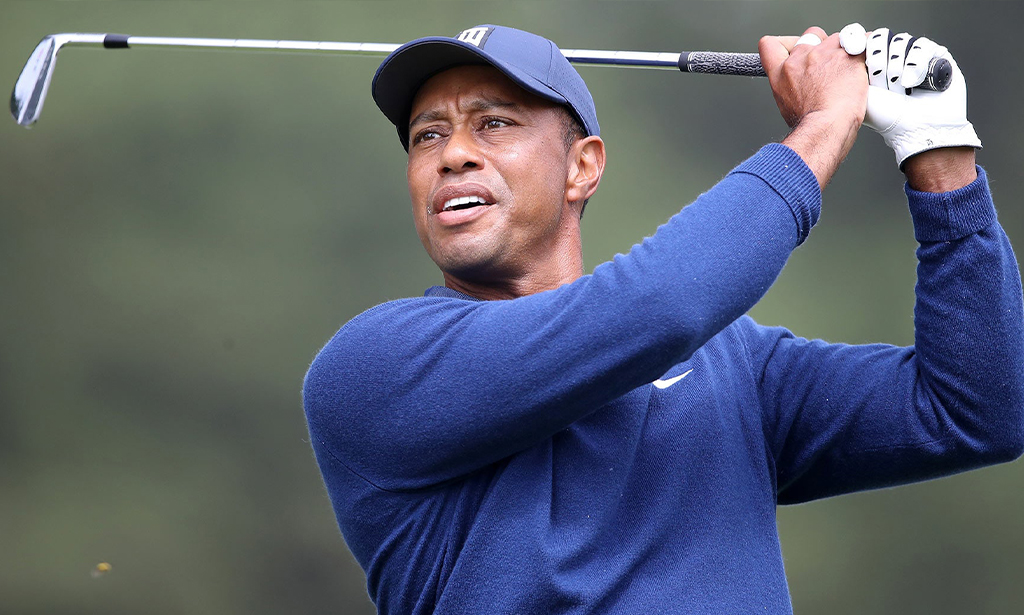
In his first in-depth interview since his February car accident, an upbeat Tiger Woods shed light on his traumatic injuries, recovery and what the future might hold.
“I think something that is realistic is playing the tour one day—never full time, ever again—but pick and choose, just like Mr. [Ben] Hogan did. Pick and choose a few events a year and you play around that,” Woods said during a Zoom interview with Golf Digest’s Henni Koyack from his South Florida home. “You practice around that, and you gear yourself up for that. I think that’s how I’m going to have to play it from now on. It’s an unfortunate reality, but it’s my reality. And I understand it, and I accept it.”
Watch the complete video interview below:
“I don’t have to compete and play against the best players in the world to have a great life. After my back fusion, I had to climb Mt. Everest one more time. I had to do it, and I did. This time around, I don’t think I’ll have the body to climb Mt. Everest, and that’s OK. I can still participate in the game of golf. I can still, if my leg gets OK, I can still click off a tournament here or there. But as far as climbing the mountain again and getting all the way to the top, I don’t think that’s a realistic expectation of me.”
Woods suffered comminuted open fractures to both the tibia and the fibula in his right leg after losing control of his vehicle outside of Los Angeles on Feb. 23. He was rushed to Harbor-UCLA Medical Center and subsequently transferred to Cedars-Sinai Medical Center, where he spent three weeks and faced the possibility of amputation.
“There was a point in time when, I wouldn’t say it was 50/50, but it was damn near there if I was going to walk out of that hospital with one leg. Once I [kept it], I wanted to test and see if I still had my hands. So even in the hospital, I would have [girlfriend] Erica [Herman] and [friend] Rob [McNamara] throw me something. Throw me anything.”
One of the first memories Woods has after the accident is asking for a golf club to toy around with while in his hospital bed. Such began a rehabilitation process that included three months in a hospital-type bed in his home. Next, a wheelchair. He then progressed to crutches, which allowed him to regain independence and move around at his own will.
“Adding that part into my day-to-day life was so rewarding because I’d been stuck in a house. Granted, it’s a pretty nice house I’ve built for myself, but I hadn’t been able to do the one thing I love to do: I love to go outside and just be outside. Sometimes I just crutch and lay on the grass for an hour because I want to be outside. Missing the contact of a golf ball hit properly is one of the better feelings.”
Woods’ rehabilitation has been a frustrating up-and-down ride—he says he actually expected to progress faster than he did—and, in the dark days shortly after the accident, he says he reverted to a mentality he learned from his father.
“This is where dad’s teaching came into play being in the military and being SF [special forces]. Any SF operator can attest to this—you don’t know how long a firefight is gonna take. It could last five seconds or five hours and some could go on for days at a time. With that in mind, you don’t know when the end is so that’s the hard part. How do you get through that? One of my dad’s ways of getting through that was live meal-to-meal. … I just shortened up the windows of, Oh, this is gonna be nine months of hell, to It’s just two or three hours. If I can repeat these two to three hours at a time. Next thing you know it adds up, it accumulates into weeks months and to a point where here I am talking to you and walking into a room.”
Once he was cleared to practice putting, Woods lengthened the famous Scotty Cameron Newport 2 putter that he used to win 14 of his 15 majors, for he couldn’t bend over the same way he used to. Next came chipping competitions with his son, Charlie, and eventually clearance to begin very limited full-swing practice. Woods posted a video of him flushing a short iron to social media last week, which fueled significant hype and speculation on a return. But Woods suggested he is nowhere near ready to compete on the PGA Tour.
“I have so far to go … I’m not even at the halfway point,” he said. “I have so much more muscle development and nerve development that I have to do in my leg. At the same time, as you know, I’ve had five back operations. So I’m having to deal with that. So as the leg gets stronger, sometimes the back may act up. … It’s a tough road. But I’m just happy to be able to go out there and watch Charlie play, or go in the backyard and have an hour or two by myself with no one talking, no music, no nothing. I just hear the birds chirping. That part I’ve sorely missed.”
Woods said the prospect of playing with his 12-year-old son has motivated him greatly throughout the process. Some of the first post-accident images that surfaced were of Woods watching Charlie at tournaments around Florida.
“I went to golf tournaments to watch him play, and I’m looking at some of these scores he’s shooting and I said, How the hell are you shooting such high scores? I gotta go check this out,” he told Koyack. “So I’d watch him play and he’s going along great, he has one bad hole, he loses his temper, his temper carries him over to another shot and another shot and it compounds itself. I said, ‘Son, I don’t care how mad you get. Your head could blow off for all I care just as long as you’re 100 percent committed to the next shot. That’s all that matters. That next shot should be the most important shot in your life. It should be more important than breathing. Once you understand that concept, then I think you’ll get better.’ And as the rounds went on throughout the summer, he’s gotten so much better.”
Messages of support and encouragement have poured into Woods’ phone and inbox since the accident—including a call from the president, which Woods cannot recall without laughing about hearing “the White House on line 1.” He also expressed deep gratitude for the way the golf community has embraced him. A number of PGA Tour players have visited Woods at different stages of his recovery, perhaps no one more frequently than Justin Thomas.
“The Thomases and the Woodses are like family,” he said. “JT is like the brother I never had, and Charlie is like the little brother that JT never had.”
Woods will make his first public appearance since the accident at this week’s Hero World Challenge, a 20-man tournament in the Bahamas that benefits his foundation. That he is upright and present this week is hugely encouraging, but Woods knows there is still a long road ahead.
“There’s a lot to look forward to, a lot of hard work to be done—being patient and progressing at a pace that is aggressive but not over the top. Obviously, when I get in the gym and I get flowing and the endorphins get going, I want to go, go, go,” he said. “That’s how I’ve been able to win so many tournaments. But then again, everyone reminds me at what cost? Look at you now. Pre-accident I was what? Ten surgeries. That’s just the wear and tear of doing my sport, of just trying to push it to win everything I possibly can. To win every single tournament I played in, I would do everything I possibly could. Like any sport, there’s a cost to it. There’s a cost of doing business and unfortunately, for sportsmen and sportswomen, injuries are a part of it.”
This article originally appeared on Golf Digest.
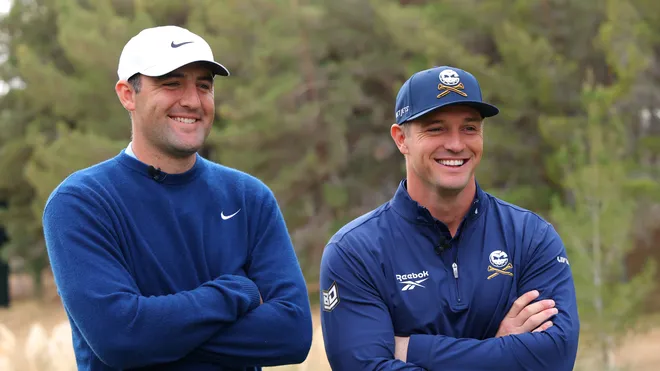
In the ever-evolving world of professional golf, few rivalries capture the contrast of style and substance like Scottie Scheffler versus Bryson DeChambeau. While both have claimed massive wins and global headlines, their paths to success and how they play the game couldn’t be more different. Here’s a deep dive into their strengths, weaknesses, career highlights, and what makes each stand out in today’s competitive landscape.
Backgrounds and Styles
Scottie Scheffler
The Dallas-born Scheffler embodies a classic, workmanlike approach to golf. Known for his calm demeanor, efficient swing, and remarkable consistency, Scheffler has risen to the top of the world rankings with little flash but elite-level substance. His game is built on balance, precision, and one of the most reliable tee-to-green performances the sport has seen in years.
Bryson DeChambeau
Nicknamed “The Scientist,” DeChambeau has taken an analytical and experimental approach to the game. He’s redefined physical fitness in golf, adding serious bulk to increase driving distance. Known for using single-length irons and obsessing over launch angles and biomechanics, Bryson is a true disruptor. His aggressive style polarizes fans and analysts, but it undeniably commands attention.
Strengths
Scheffler
- Tee-to-Green Excellence: Leads the PGA Tour in strokes gained tee-to-green.
- Consistency: Rarely misses cuts and often finishes in the top 10.
- Short Game: Exceptional touch and creativity around the greens.
- Mental Game: Composed under pressure; rarely rattled.
DeChambeau
- Driving Distance: One of the longest hitters in the game; regularly over 320 yards.
- Innovation: Willing to take unconventional approaches for marginal gains.
- Power Play: Dominates par 5s and shortens long courses with his length.
- Confidence: Self-belief and boldness to attempt shots most won’t.
Weaknesses
Scheffler
- Putting: Historically his weakest stat, though he’s shown improvement.
- Media Presence: More reserved; lacks the big personality that moves the needle for fans and brands.
DeChambeau
- Inconsistency: Can be volatile—either dominating or struggling.
- Course Management: Aggressiveness sometimes leads to trouble.
- Injury Risk: His physical transformation has come with some health setbacks.
Biggest Wins
Scottie Scheffler
- The Masters (2022)
- The Players Championship (2023)
- Multiple WGC and Signature Events
As of 2025, Scheffler has claimed over 10 PGA Tour titles and continues to rack up top finishes in majors and elite events.
Bryson DeChambeau
- U.S. Open (2020)
- Arnold Palmer Invitational (2021)
- Multiple LIV Golf Wins
DeChambeau made headlines by joining LIV Golf, where he’s claimed multiple high-stakes victories, including a team championship and a dominant individual LIV win in 2023.
Career Earnings
Scheffler:
Over $50 million in PGA Tour earnings alone, with additional income from endorsements like Nike, TaylorMade, and Rolex.
DeChambeau:
Estimated $60–$80 million, largely boosted by a reported $100+ million LIV Golf contract and additional prize money. His endorsements have shifted due to his controversial LIV move, but he remains a marketable figure.
Similarities
Both are U.S.-born and played collegiate golf (Scheffler at Texas, DeChambeau at SMU).
Each has reached the top 10 in the Official World Golf Ranking.
Both have won majors and represented the U.S. in Ryder Cups.
Each has shown a willingness to be different—Scheffler through quiet dominance, DeChambeau through outspoken innovation.
Key Differences
| Trait | Scottie Scheffler | Bryson DeChambeau |
|---|---|---|
| Playing Style | Traditional, consistent | Aggressive, experimental |
| Physical Transformation | Minimal | Extreme (bulk and strength) |
| Equipment | Standard setup | Single-length irons |
| Public Persona | Reserved, grounded | Outspoken, controversial |
| Tour Affiliation | PGA Tour loyalist | LIV Golf convert |
Final Thoughts
Scheffler and DeChambeau represent two archetypes in modern golf: one a quiet technician, the other a showman scientist. Whether you admire Scottie’s stoic efficiency or Bryson’s radical reinvention, both are changing the game in their own way. And in a sport where individuality meets performance, there’s room—and demand—for both.
Blog
Why Proper Club Fitting Is the Real Game Changer

If you’ve ever walked off the 18th green thinking, “It’s not me, it’s the clubs,” well… you might be half right.
As a PGA Professional who’s watched thousands of swings—from scratch players to first-timers—I can tell you that one of the most overlooked keys to better golf is proper club fitting. Not just buying shiny new sticks off the rack, but taking the time to find clubs that are tailored to your swing.
You don’t need a Tour card to get Tour-level precision. Let’s talk about why club fitting matters, what it changes, and how it can truly transform your game from the tee box to the final putt.
The Myth of “Good Enough”
“I’m not good enough to be fit for clubs.”
That’s the most common thing I hear—and it’s completely backwards.
High-handicap golfers have even more to gain from club fitting than low-handicappers. Why? Because the equipment can help you fix ball flight, optimize distance, reduce mis-hits, and build confidence—all without having to reinvent your swing.
Off-the-rack clubs are designed to fit “average” specs. But no two golfers are the same. Length, lie angle, shaft flex, grip size—these all play a massive role in how the club interacts with your body and the ground.
What Happens in a Proper Club Fitting?
At its core, a fitting session is about matching the equipment to your natural swing—not forcing you to swing a certain way to fit the gear.
Here’s what a proper club fitting includes:
1. Interview & Swing Assessment
A certified fitter (or PGA pro like myself) will ask about your current set, ball flight tendencies, common misses, and goals. Then we’ll watch you hit some shots to get a baseline.
2. Launch Monitor Data
Using tools like TrackMan or Foresight, we’ll capture numbers like:
- Ball speed
- Launch angle
- Spin rate
- Club path and face angle
- Carry distance and dispersion
These numbers don’t lie—and they tell us what to tweak.
3. Testing Head & Shaft Combinations
You’ll hit several combinations of club heads and shafts to find what gives you the best performance. One degree of loft or a different shaft flex can make a huge difference.
4. Dialing In Lie Angle & Length
Lie angle affects directional control—too upright, and you might pull shots left; too flat, and you’ll miss right. Club length affects control, consistency, and strike location.
5. Grip Size & Feel
Don’t underestimate this. A grip that’s too thick or too thin can alter your grip pressure and release pattern.
Real Results—Backed by Data
One of my students recently went through a full iron fitting. He was using clubs he bought off the rack 10 years ago. His miss was a push-fade, and he struggled with distance control.
After 90 minutes, a combination of slightly shorter shafts, softer flex, and two degrees more upright lie changed everything. His dispersion tightened by 40%, and he gained an average of 12 yards per club. More importantly—his confidence skyrocketed.
And it wasn’t just him. Across the board, golfers who get fitted:
- Gain more consistent contact
- Reduce directional misses
- Improve distance gapping
- Hit more greens in regulation
- Score better, without changing their swing
The Mental Game Boost
Here’s a secret: it’s not just about numbers. Fitted clubs give you confidence. When you know the tool in your hand is built for you, you swing freer, commit more fully, and stop second-guessing every shot.
Confidence leads to better swings. Better swings lead to better results. It’s a cycle—and it starts with the right equipment.
What About Cost?
Yes, a proper fitting might cost $75–$150 depending on where you go. And yes, custom-fit clubs may be slightly more than what you’d pay at a big box store.
But if you’re already spending time and money on golf, wouldn’t you want to get the most out of it?
A one-time investment in fitting can save you years of frustration—and possibly hundreds spent chasing fixes that won’t work with ill-fitting clubs.
Look—I’ve given thousands of lessons in my career, and nothing changes a golfer’s outlook faster than finally swinging clubs that work with them, not against them.
Whether you’re a 5 handicap trying to fine-tune yardages or a 25 handicap tired of slicing your driver, a proper club fitting can absolutely be a game changer.
You don’t need a new swing—you just need the right tools.
So before you spend another dollar on swing gadgets or tip videos, find your local PGA professional or certified fitter and book a session. Your game (and your sanity) will thank you.
Want more ways to play better without starting over?
Visit ClickItGolf.com every week for practical golf improvement tips, equipment reviews, betting insights, and advice from golfers who live the game every day.
Blog
Zurich Classic 2025: Betting & Fantasy Insights from Kelly Hodgeson
Rory McIlroy returns to the Zurich Classic with Shane Lowry as favorites, but in this unique team event, betting and fantasy success comes down to smart picks and hidden value—here’s how to play it.

The Zurich Classic of New Orleans returns this week, offering a unique team format that challenges both bettors and fantasy players alike. As someone who enjoys the thrill of wagering and the strategy of fantasy golf, I’ve taken a close look at this year’s field to provide insights that could help you make informed decisions.
Understanding the Format
The Zurich Classic is the PGA Tour’s only team event, featuring 80 two-man teams competing over four rounds:
- Rounds 1 & 3: Best Ball (Four-Ball)
- Rounds 2 & 4: Alternate Shot (Foursomes)
This format emphasizes team chemistry and strategy, making it distinct from traditional stroke play events.
Defending champions Rory McIlroy and Shane Lowry enter the tournament as favorites, with odds around +350 to +360 across various sportsbooks. Their victory last year and McIlroy’s recent Masters win contribute to their favored status.
Betting Consideration: While their form is impressive, the low odds may not offer substantial value. In team events with unpredictable dynamics, it’s often prudent to seek teams with higher potential returns.
Teams to Watch
Several pairings present intriguing opportunities:
- Billy Horschel & Tom Hoge (+2200): Horschel’s history at TPC Louisiana, including a previous win, combined with Hoge’s recent top-20 finishes, make them a formidable duo.
- Thomas Detry & Robert MacIntyre (+1800): This European pair has shown consistency, with Detry’s earlier victory this season and MacIntyre’s solid performances leading up to the Masters.
- Patrick Fishburn & Zac Blair (+8000): As longshots, their fourth-place finish last year and recent form suggest they could surprise the field again.
Fantasy Golf Insights
For those setting fantasy lineups, consider the following:
- Nick Taylor & Adam Hadwin: Their past success at TPC Louisiana, including a second-place finish in 2023, indicates strong course compatibility.
- Davis Riley & Nick Hardy: Winners in 2023, their chemistry and experience in this format could translate into valuable fantasy points.
- Alex & Matt Fitzpatrick: The Fitzpatrick brothers have shown steady improvement, with a T11 finish last year, making them a reliable mid-tier option.
Strategic Betting Tips
- Value Over Favorites: In a format prone to variability, consider teams with odds of +1800 or higher that exhibit strong recent form and synergy.
- Monitor Course History: Teams with a track record at TPC Louisiana may have an edge, especially in navigating the unique team dynamics.
- Stay Informed: Keep an eye on weather conditions and any last-minute team changes, as these can significantly impact performance.
As the tournament unfolds, the combination of strategic betting and informed fantasy selections can enhance your engagement with the Zurich Classic. Remember to play responsibly and enjoy the unique challenges this team event presents.
-

 Product Review6 years ago
Product Review6 years agoThe Perfect Practice Putting Mat Review by Jason Tenzer
-

 Blog4 years ago
Blog4 years agoLoophole Rule Offers PGA Tour Pros a Mulligan
-

 Blog4 years ago
Blog4 years ago2021 Buyer’s Guide: The Top 10 Value Golf Balls For Distance & Feel
-

 Blog4 years ago
Blog4 years agoGolf Marriage Counselor
-

 Blog6 years ago
Blog6 years ago9 Biggest Chokes Of The Past Decade
-

 Product Review6 years ago
Product Review6 years agoTHE ADJUSTABLE IRONS: WALKING STICKS GOLF CLUBS
-

 Blog4 years ago
Blog4 years agoWhat Your Golf Clubs Say About You
-

 Equipment6 years ago
Equipment6 years agoOHK Sports Interview by Jason Tenzer



